She gets a new cybernetic arm.
Watch this teen‘s wholesome reaction to getting her very first bionic arm.
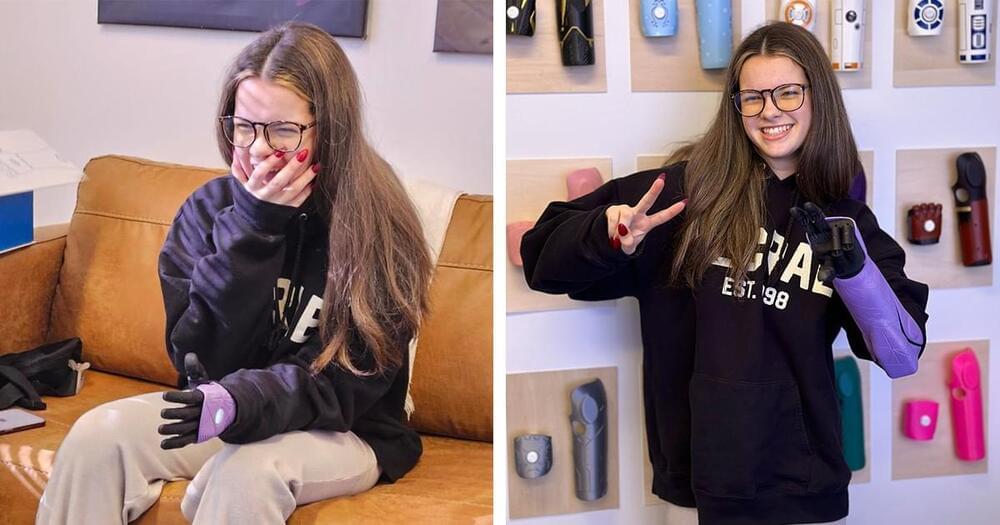
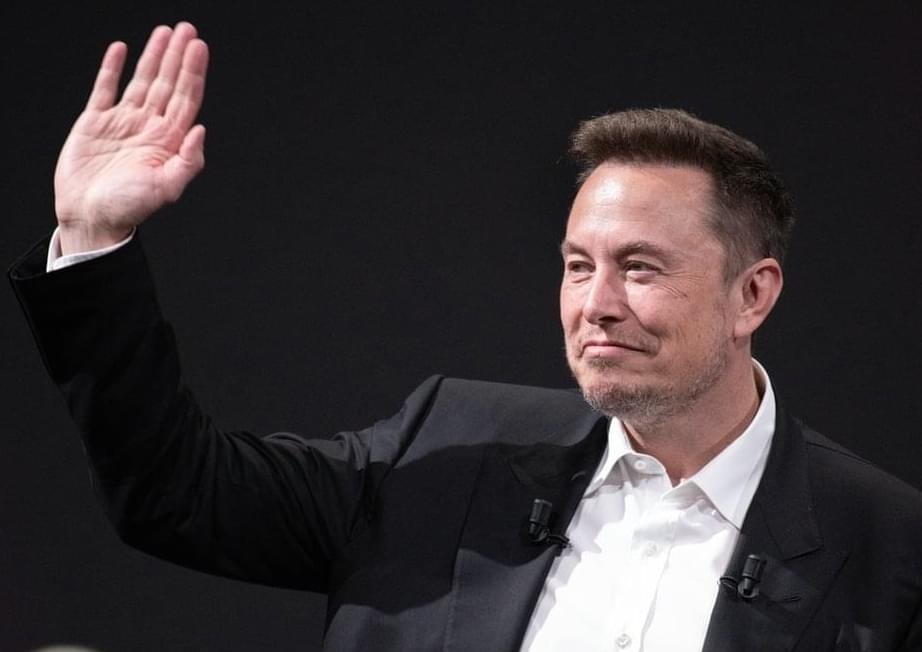
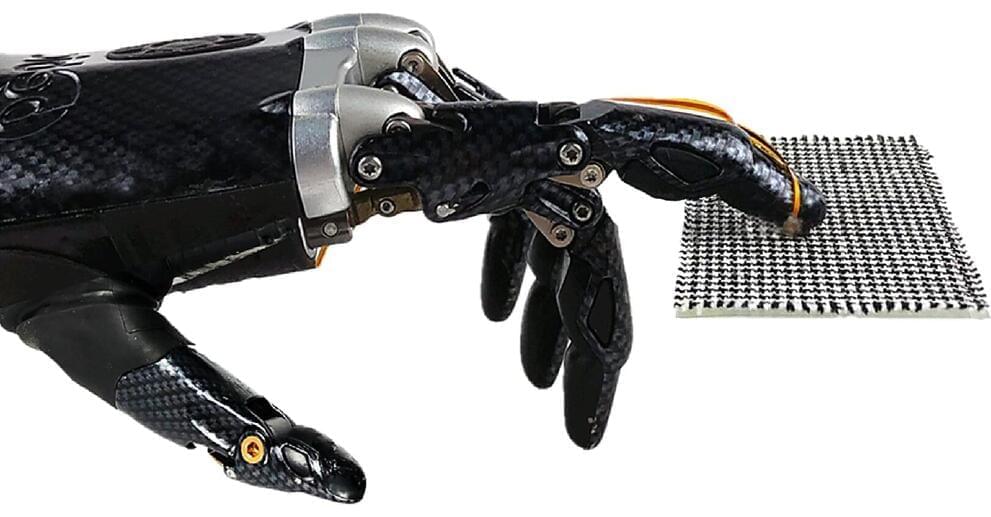
An artificial sensory system that is able to recognize fine textures—such as twill, corduroy and wool—with a high resolution, similar to a human finger, is reported in a Nature Communications paper. The findings may help improve the subtle tactile sensation abilities of robots and human limb prosthetics and could be applied to virtual reality in the future, the authors suggest.
Humans can gently slide a finger on the surface of an object and identify it by capturing both static pressure and high-frequency vibrations. Previous approaches to create artificial tactile sensors for sensing physical stimuli, such as pressure, have been limited in their ability to identify real-world objects upon touch, or they rely on multiple sensors. Creating a real-time artificial sensory system with high spatiotemporal resolution and sensitivity has been challenging.
Chuan Fei Guo and colleagues present a flexible slip sensor that mimics the features of a human fingerprint to enable the system to recognize small features on surface textures when touching or sliding the sensor across the surface. The authors integrated the sensor onto a prosthetic human hand and added machine learning to the system.
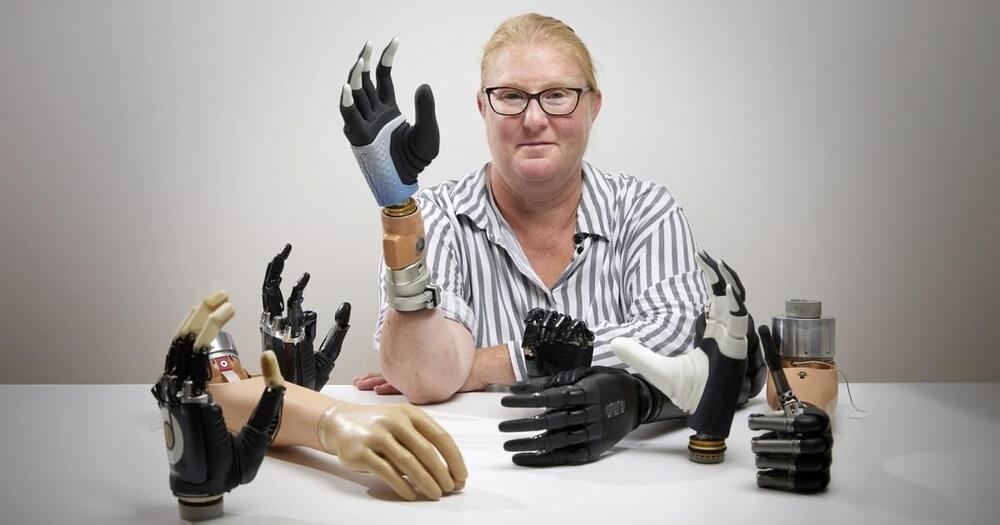
Link :- Watch a video of Karin using her new bionic hand: https://www.freethink.com/hard-tech/bionic-hand-phantom-limb
A new way of merging the body with a bionic hand provided a woman with more control over her prosthetic and less phantom limb pain.
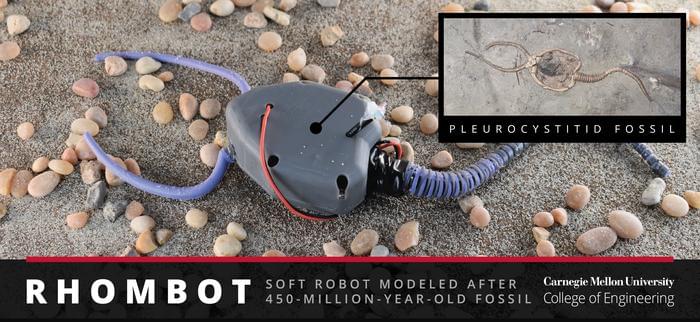
A recent study published in the Proceedings of the National Academy of Sciences examines the use of Softbotics to mimic the movements of the ancient marine organism, pleurocystitid, which is estimated to have existed approximately 450 million years ago and is believed to be one of the first marine invertebrates to control their movements with a muscular stem. This study was led by researchers from Carnegie Mellon University and holds the potential to help scientists use a new field known as Paleobionics to better understand the evolutionary history of extinct organisms with paleontological evidence.
Image of a Pleurocystitid fossil (inset) and the pleurocystitid robot replica developed for the study. (Credit: Carnegie Mellon University College of Engineering)
“Softbotics is another approach to inform science using soft materials to construct flexible robot limbs and appendages,” said Dr. Carmel Majidi, who is a Professor of Mechanical Engineering at Carnegie Mellon University and lead author of the study. “Many fundamental principles of biology and nature can only fully be explained if we look back at the evolutionary timeline of how animals evolved. We are building robot analogues to study how locomotion has changed.”
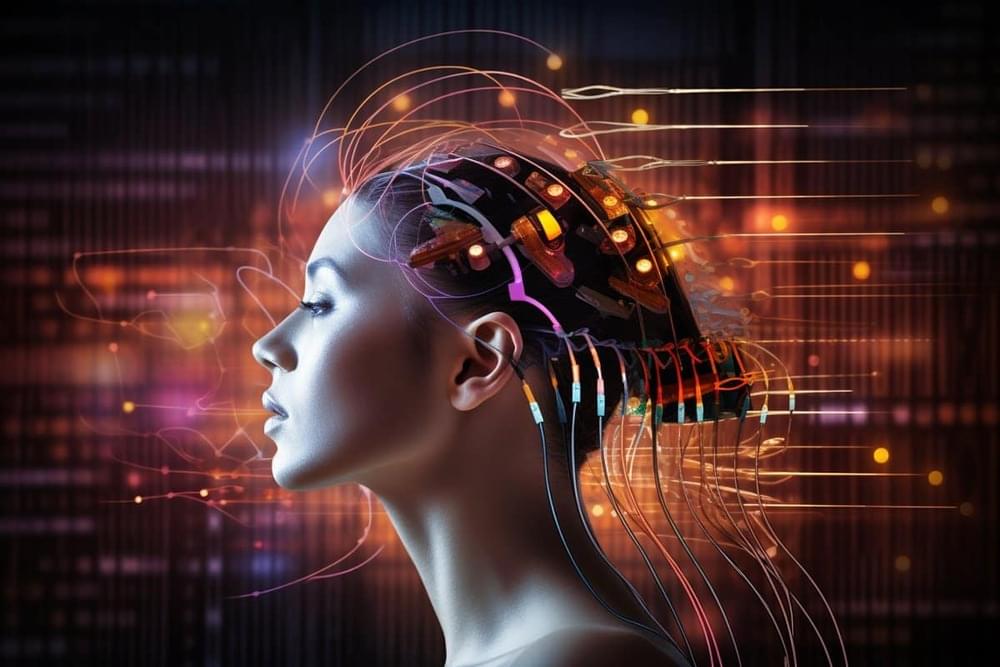
Summary: A new speech prosthetic offers hope for those with speech-impairing neurological disorders.
By converting brain signals into speech using high-density sensors and machine learning, the technology represents a significant advancement over current slower communication aids.
Though still in early stages, the device has achieved a 40% accuracy in decoding spoken data during limited trials and is moving towards a cordless design.
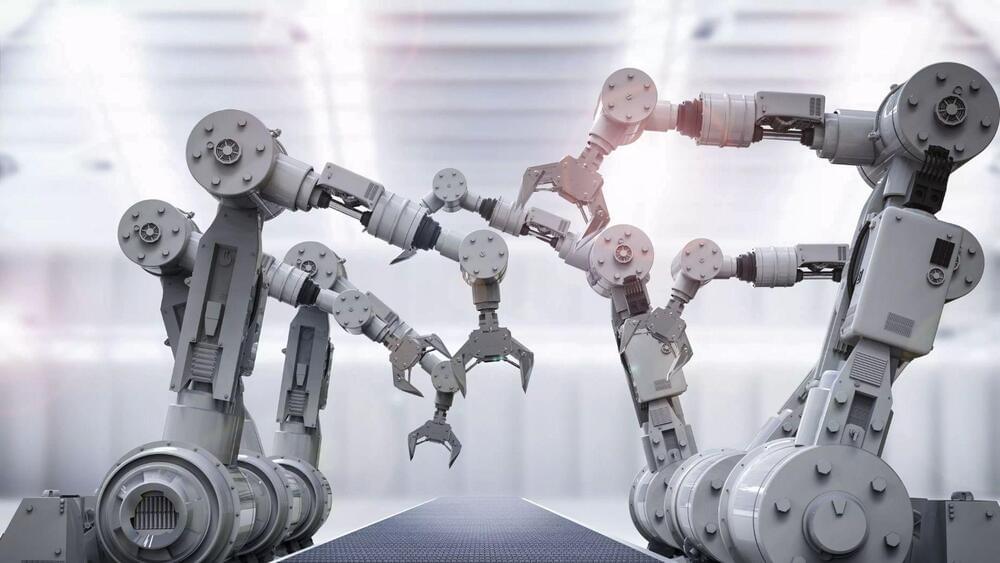
The researchers built a dynamic data acquisition platform to capture human arm motion during assembly tasks.
A team of researchers from the Beijing Institute of Technology has developed a new method to control robots that can assemble satellites in space. The technique is inspired by the human arm, which can adjust its damping to perform different tasks with precision and stability. The researchers published their findings in Cyborg and Bionic Systems.
Space operations with robots and challenges
Space operations require robots to interact with objects in complex and dynamic environments. However, traditional robot control methods have limitations in adapting to diverse and uncertain situations and are prone to vibration, which can cause assembly failure. To overcome these challenges, the researchers proposed a human-like variable admittance control method based on the variable damping characteristics of the human arm.
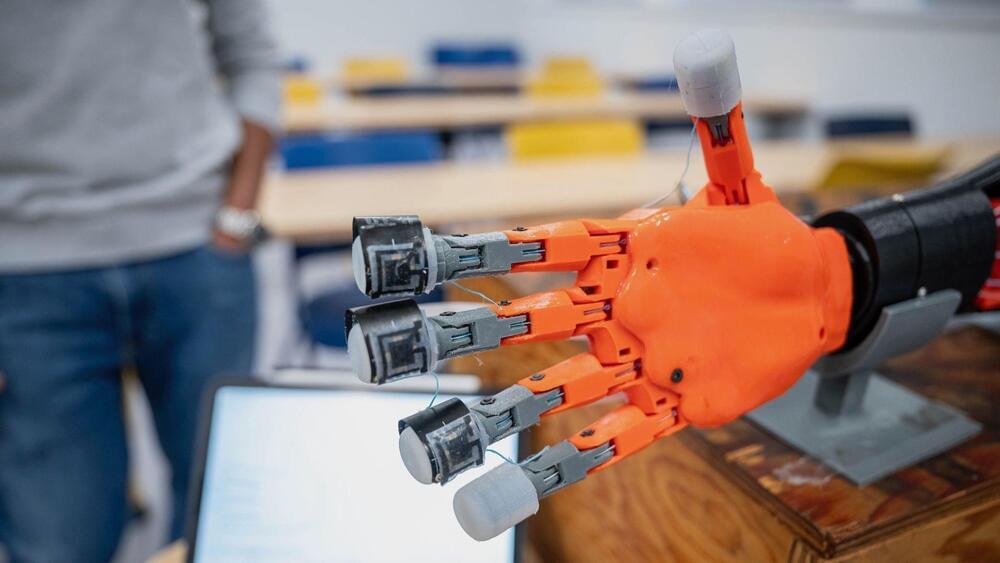
“As sensors continue to evolve to be more skin-like, there is a need for robots to be smarter. Developments in sensors and artificial intelligence will need to go hand in hand”
Scientists at the University of British Columbia and Honda’s research institute have revealed the creation of a revolutionary soft sensor that mimics human skin in a press release. This highly sensitive, smart, and stretchable sensor is poised to reshape how machines interact with the world.
Offering a myriad of applications, the soft sensor takes cues from human skin in terms of both sensitivity and texture. It can make actions such as picking up a piece of soft fruit possible when applied to the surface of a prosthetic or robotic arm.
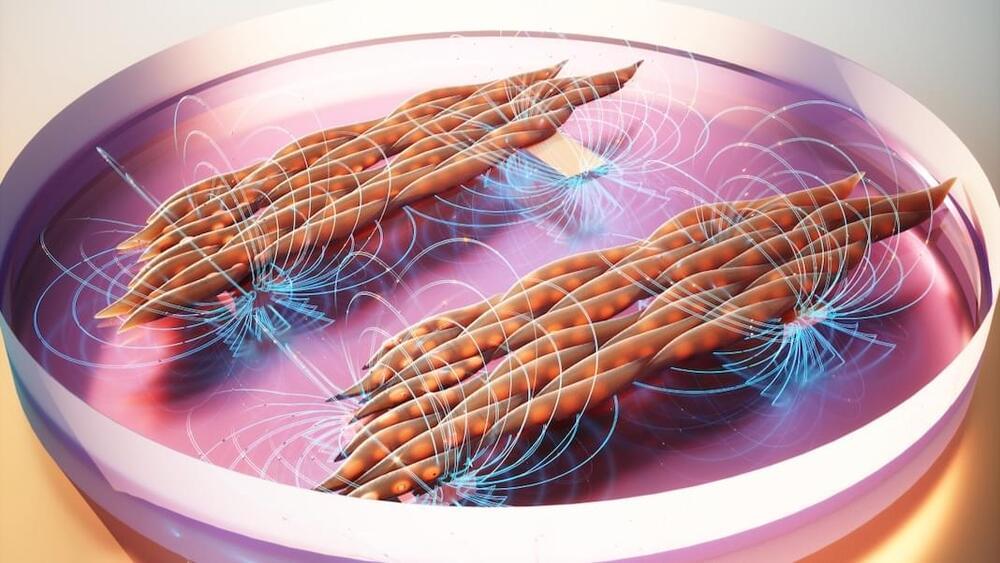
Unfortunately, these precise cell arrangements are also why artificial muscles are difficult to recreate in the lab. Despite being soft, squishy, and easily damaged, our muscles can perform incredible feats—adapt to heavy loads, sense the outside world, and rebuild after injury. A main reason for these superpowers is alignment—that is, how muscle cells orient to form stretchy fibers.
Now, a new study suggests that the solution to growing better lab-grown muscles may be magnets. Led by Dr. Ritu Raman at the Massachusetts Institute of Technology (MIT), scientists developed a magnetic hydrogel “sandwich” that controls muscle cell orientation in a lab dish. By changing the position of the magnets, the muscle cells aligned into fibers that contracted in synchrony as if they were inside a body.
The whole endeavor sounds rather Frankenstein. But lab-grown tissues could one day be grafted into people with heavily damaged muscles—either from inherited diseases or traumatic injuries—and restore their ability to navigate the world freely. Synthetic muscles could also coat robots, providing them with human-like senses, flexible motor control, and the ability to heal after inevitable scratches and scrapes.
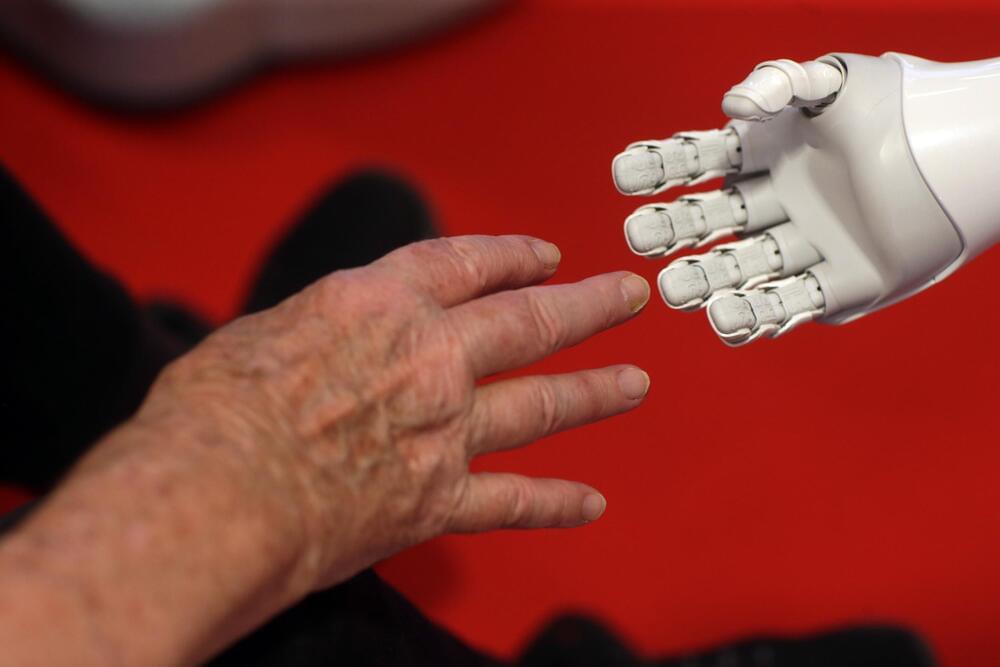
Here’s my latest Opinion piece just out for Newsweek…focusing on cyborg rights.
Over the past half-century, the microprocessor’s capacity has doubled approximately every 18–24 months, and some experts predict that by 2030, machine intelligence could surpass human capabilities. The question then arises: When machines reach human-level intelligence, should they be granted protection and rights? Will they desire and perhaps even demand such rights?
Beyond advancements in microprocessors, we’re witnessing breakthroughs in genetic editing, stem cells, and 3D bioprinting, all which also hold the potential to help create cyborg entities displaying consciousness and intelligence. Notably, Yale University’s experiments stimulating dead pig brains have ignited debates in the animal rights realm, raising questions about the ethical implications of reviving consciousness.
Amid these emerging scientific frontiers, a void in ethical guidelines exists, akin to the Wild West of the impending cyborg age. To address these ethical challenges, a slew of futurist-oriented bills of rights have emerged in the last decade. One of the most prominent is the Transhumanist Bill of Rights, which is in its third revision through crowdsourcing and was published verbatim by Wired in 2018.
These cyborg bills encompass a broad array of protections, including safeguards for thinking robots, gender recognition for virtual intelligences, regulations for genetically engineered sapient beings, and the defense of freedoms for biohackers modifying their bodies. Some also incorporate tech-driven rules to combat environmental threats like asteroids, pandemics, and nuclear war.